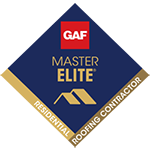Grand Rapids, Michigan has four very distinct seasons that range from warm, humid summers with temperatures hovering in the mid-80's to harsh winters that consistently see days and nights in the below-freezing category.
Read MoreIn Western Michigan, our homes go through a lot. We face freezing winters, humid summers, and everything in between. Your windows play a big role in keeping your home comfortable year-round.
Read MoreChoosing the right siding for your home in Western Michigan means finding a solution that’s both tough and attractive. With a mix of freezing winters, windy springs, and humid summers, your siding has to do more than just look good—it needs to perform.
Read MoreIn Western Michigan, your roof works overtime. From heavy lake-effect snow to strong spring winds and summer storms, our homes take a beating year-round. At Avalon, we know that your roof isn’t just protection—it’s peace of mind.
Read MoreRoofing is a critical aspect of any structure, providing protection, insulation, and durability. While the purpose of commercial and residential roofing is the same, the two differ significantly in materials, design, and installation methods.
Read MoreWindow screens are essential for maintaining ventilation while keeping out pests and debris. Over time, screens may tear or wear out, necessitating a replacement.
Read MoreFinding the Right Siding for Your Home At Avalon Roofing, we know that selecting the right siding for home is a major decision. The right choice not only boosts your home’s curb appeal but also improves energy efficiency and protects against harsh weather.
Read MoreWhat Goes into the Cost to Redo a Roof? At Avalon Roofing, we know that reroofing your home is a major investment. The price of a new roof depends on various factors, from material choices to labor costs. Understanding what influences pricing can help you budget wisely and make informed decisions.
Read MoreWhen it comes to maintaining the safety and comfort of your home, ensuring your roof remains leak-free is crucial. Ignoring potential leaks might seem minor, but a compromised roof can quickly become a costly nightmare.
Read MoreCrafted to redefine the concept of opulent living, this exquisite roof transforms your home into a masterpiece of design and style. Meticulously crafted by our team of visionary architects and skilled artisans, our Luxury Designer Roof is a true testament to uncompromising quality and innovation.
Read MoreSubscribe to Avalon's Blog










